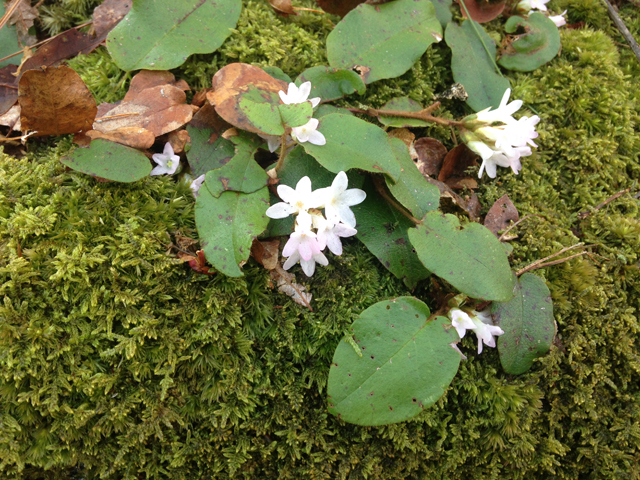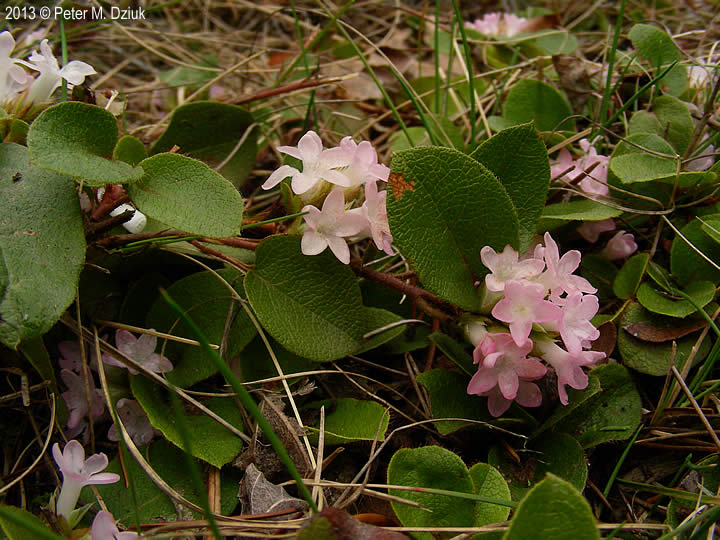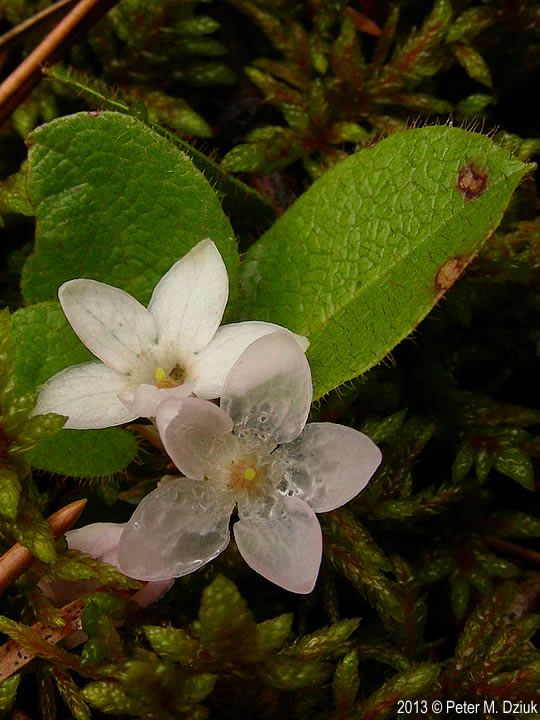Trailing Arbutus, Epigaea repens
By Joyce Tuharsky, WORC Member
Trailing arbutus is a short spreading shrub, almost like ground cover, in the Ericaeae (heath) family—a group that also includes cranberries and blueberries. This plant grows 4–6 inches high, up to 20 inches long, and has woody stems and twigs that are covered in stiff rust-colored hairs. The leathery leaves are evergreen, alternate, aromatic, and oval-in-shape with rounded bases.
The flowers of Trailing arbutus are quite lovely and very fragrant with a pleasant, spicy scent. Each flower is trumpet-shaped with 5 petals and 5 stamens and about 1/2 inch across. The petals range from white to pink in color and are almost translucent in appearance. These flowers are borne in clusters at the ends of the branches. They may be “perfect,” having both male and female functioning parts, but often are unisex due to underdeveloped parts.


Trailing arbutus are one of first native plants to bloom in spring. Depending on the latitude and season, they can appear as early as March when patches of snow are still on the ground, and linger as late as early June. For humans, they harken the end of winter. For bumblebees and other early-emerging insects, they are an important early source of nectar. The fruit of Trailing arbutus is a round, berry-like capsule, about ¼ inch in diameter, covered in hairs and filled with fleshy white tissue. The seeds are dispersed by ants.
While the leathery leaves with coarse hairs discourage herbivory, the larvae of some beetles and moths specialize in eating them. Trailing Arbutus is thought to be a larval host plant for the hoary elfin butterfly (Callophrys polios), a species that is declining significantly in eastern states.


The native range of Trailing Arbutus covers most of the eastern U.S and Canada. Nevertheless, due its special growing requirements and destruction of habitat, this plant is becoming rare. It is slow-growing and requires moist, shady habitats with acidic, humus-rich soil. It also needs a type of fungus in the soil to help nourish its roots. Therefore, it is vulnerable to disturbance and nearly impossible to transplant. Once removed from an area, it is unlikely to return.
Scientists believe that Trailing arbutus is an ancient plant that has existed In North America since the last glacial period. Some indigenous people, such as the Forest Potawatomi, regard this plant as their tribal flower. It is also the state flower of Massachusetts and the floral emblem of Nova Scotia. In the late 1800s/early 1900s, Trailing arbutus was harvested aggressively for bouquets and garlands and to add fragrance to soaps and perfume. Today, the plant is protected in many states.
- Top Left Photo: Christie Orr
- Top Right Photo: ©Peter M. Dziuk – Minnesota Wildflowers
- Middle Left Photo: ©Peter M. Dziuk – Minnesota Wildflowers
- Middle Right Photo: Ashmore – Richard Holzman
